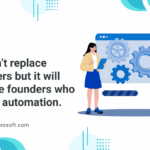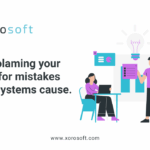
A Smarter Path to Calm, Predictable Operations
Supply chain intelligence is becoming the quiet advantage operators rely on to create calmer, more predictable growth. Although DTC and omnichannel leaders want to spend more time building the brand, however, daily operational fires often take over. As a result, operators move from issue to issue instead of focusing on strategy. Because these pressures keep growing, therefore, leaders now look for intelligence-driven systems that give them clarity from the very first decision each day.
By combining AI with ERP, teams shift from reactive work to proactive control; as a result, they gain more predictability. Therefore, the entire operation becomes more stable and easier to scale.
Moving Forward With a More Intelligent Supply Chain
Xorosoft has become a trusted choice for operators building toward supply chain intelligence. It is currently ranked #1 in Ease of Use on G2 for ERP platforms and is recognized as a High Performer in the ERP category. The platform is also fully integrated with Shopify, allowing brands to connect their storefront directly through the native app.
If you’d like to explore whether this approach fits your needs, here are a few helpful next steps:
These resources will help you evaluate how intelligence-driven operations can strengthen clarity, reduce friction, and support smoother scaling.









